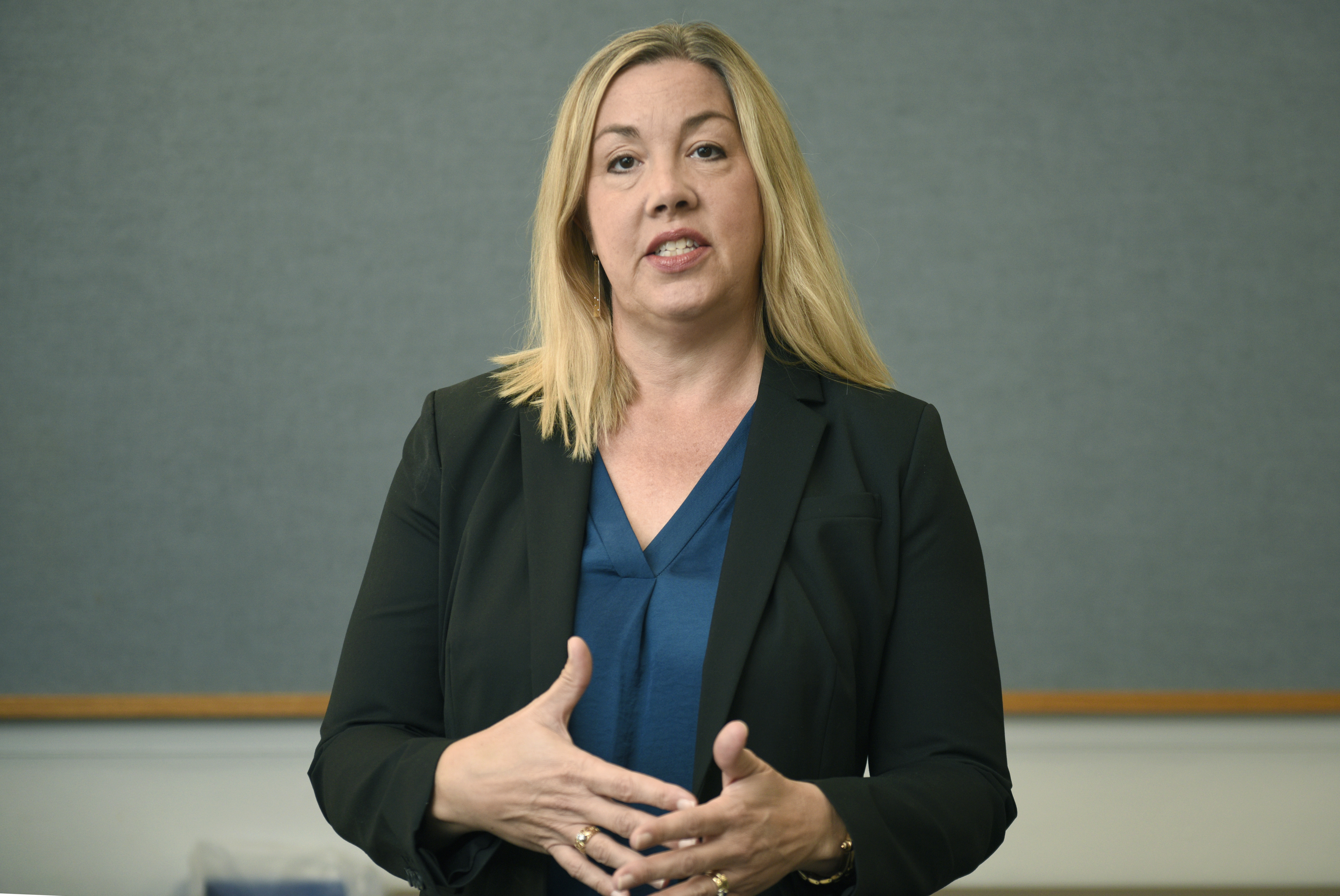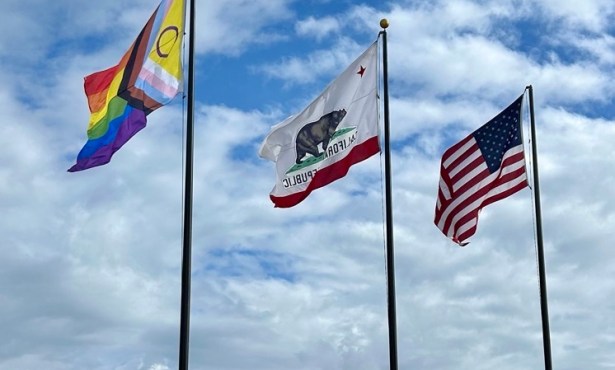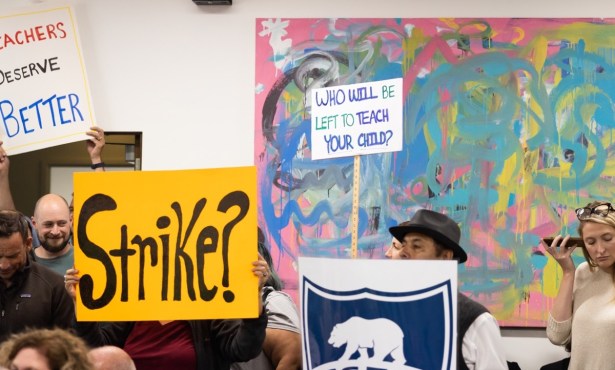Everything You Wanted to Know About Sex Ed
Healthy Youth Act Rewrites the Book on How We Talk About Sex in Santa Barbara Classrooms

For months, a small group of concerned citizens has taken to public comment at the Santa Barbara Unified School District (SBUSD) school board and a few City Council meetings, alleging the state-mandated sexual education curriculum is indoctrinating Santa Barbara’s youth with a liberal agenda. The group has charged that one of the state-approved books teaches students to use vegetables in place of sex toys, among other outrageous claims.
The California Healthy Youth Act, approved under Assembly Bill 329 in 2016, requires school districts to provide students with “integrated, comprehensive, accurate, and unbiased comprehensive sexual health and HIV prevention education.” However, each district’s locally elected leadership chooses which curriculum and instructional resources, including textbooks, are used in that district.
There are six state-approved curricula, but any curriculum can be used as long as it meets the state requirements. SBUSD is in the process of replacing the middle school curriculum because the current textbook, Holt Decisions for Health, doesn’t meet the new requirements. The final decision will be made this winter, with input from parents.
The Santa Barbara Independent met with some of the Healthy Youth Act’s loudest local critics and with SBUSD officials to parse the curriculum the district uses now and what changes are on the horizon.
The Vocal Minority
“[The mandate] goes against Judeo-Christian values, and like it or not, we are a Judeo-Christian nation,” said Barbara Batastini, a vocal critic of the mandate at school board meetings.
When it came down to it, this sentiment seemed to be at the root of the campaign against the mandate. Caroline Abate, an elementary school teacher at an out-of-district, religiously affiliated private school in S.B., said she frequently speaks out against the mandate because it goes against parents’ right to practice freedom of religion.
“If you have religious beliefs that require you to recognize marriage as being the union of one man and one woman, this forces you to participate in something that goes directly against that belief system,” Abate said. Part of the law requires the curriculum to be inclusive of LGBTQ relationships, so teachers must provide examples of same-sex couples in their instruction.
Abate and Batastini have repeatedly shown or referenced sexually explicit documents they claim come from the state-approved textbooks. Although they make up a small group in Santa Barbara, their documents are from much larger groups with the same views.
Many of the materials the two women reference come from either Informed Parents of California, a statewide group with tens of thousands of members that opposes the sex ed law, or another organization called Church United, a group of more than 500 California pastors actively trying to “change the culture in California.”
One of the materials put out by Church United and presented to the S.B. school board shows a drawing of a cucumber, a carrot, and a banana with a caption saying, “What if you don’t have time or money to buy sex toys? [These] make great dildos; just don’t forget to use a condom!”
The document, which claims that the drawing comes directly from state-approved curriculum, is actually from a pamphlet created for the Adolescent Health Working Group, a string of health clinics in San Francisco. The drawing was never created for any kind of school curriculum and has never been featured in any classroom, according to EdSource, a nonprofit journalism website that provides reports on California public education issues and policies.
In addition to the sex–toy diagram, other shocking depictions such as a “condom relay race” for 5th and 6th graders and a “genderbread man,” which defines gender identity terminology to kindergarteners through 4th graders, have been frequently referenced at S.B. school board meetings in recent months as materials taken directly from the state-approved sexual education curriculum. The comments became so persistent that Superintendent Cary Matsuoka addressed the issue last month, dismissing the comments as “misinformed” and “false.”
Let’s Just Talk
“The curriculum the [SBUSD] currently uses or will use definitely does not illustrate this ‘genderbread man’ or any of these strange diagrams,” said Dr. Anne Roundy-Harter, director of secondary education at the school district.
Roundy-Harter explained that the Healthy Youth Act requires the district to teach the comprehensive sex education at least once in middle school and at least once in high school. She said that everything taught is medically accurate and meant to help students protect their sexual and reproductive health. It also teaches them about healthy relationships and body image, she said, and encompasses all kinds of relationships and identities.
Although the state offers an optional curriculum for elementary school students in addition to middle school and high school students, SBUSD has not adopted any elementary curricula. It does, however, show two separate cartoon videos for boys and girls in 5th and 6th grades called Let’s Just Talk, but they are about puberty and body anatomy, not sex or sexual relations.
“This is also about preventing dating violence, being safe online, and understanding those who are different from you,” Roundy-Harter said. Parents can opt their kids out of the lessons, and the law requires they be notified 14 days beforehand and given an opportunity to view the curriculum, although it doesn’t require it to be posted online.
Abate and Batastini argue the ability to opt out is misleading. “Parents can opt out of the HIV and STD stuff, but they can’t opt out of the transgender or other LGBT lessons,” Batastini said.
What Batastini is likely referring to, Roundy-Harter said, is California’s FAIR Act. The law, entirely different from the Healthy Youth Act, mandates California public schools to reference the political, economic, and social contributions made by disabled, lesbian, gay, bisexual, and transgender people throughout history in social studies curricula and history textbooks. “Parents cannot opt their child out of social studies classes,” said Roundy-Harter.
The Healthy Youth Act does address LGBTQ terminology, though, and parents can opt their kids out of those lessons. According to the ACLU, the curriculum must “affirmatively recognize different sexual orientations and be inclusive of same-sex relationships when providing examples of couples or relationships.” It must also teach about “gender, gender expression, gender identity, and explore the harm of negative gender stereotypes.”
“It doesn’t say anything good or bad about being gay or transgender,” Roundy-Harter said. “It just acknowledges that they exist and includes them in health discussions. We don’t talk about it with elementary-school-aged children.”
A New Framework
Critics have often cited the Health Education Curriculum Framework for California Public Schools, which is aligned with the Healthy Youth Act, as being the most disturbing document. Batastini said the more-than-1,000-page document mentions the words “sex” or “sexuality” hundreds of times but “abstinence” only twice.
Roundy-Harter said the curriculum teaches students about abstinence as an option — abstinence-only education is illegal in California public schools — but also informs them about FDA-approved protection methods, including condoms and birth control, to prevent pregnancy and sexually transmitted diseases and infections. Districts can use the curriculum framework when developing health– education programs, but nothing in it is required.
The district is currently grappling with which of the state-approved curricula to choose for Santa Barbara’s middle schoolers. Out of the six state-approved curricula — Rights, Respect, Responsibility; Family Life and Sexual Health (FLASH); Making Proud Choices: California Edition; Positive Prevention Plus; Teen Talk; and Be Real. Be Ready. — the district is considering all except for Be Real. Be Ready., which only offers lessons for high schoolers. (SBUSD’s high school curriculum comes from several online resources picked by a professional learning community, including teenhealthandwellness.com, rather than a textbook.)
“In the next few months, we are holding public meetings with parents to get input on which curriculum is right for our students,” Roundy-Harter said. She said the dates aren’t yet set, but parents will be notified in advance so they can look at the curricula and be a part of the discussion.



